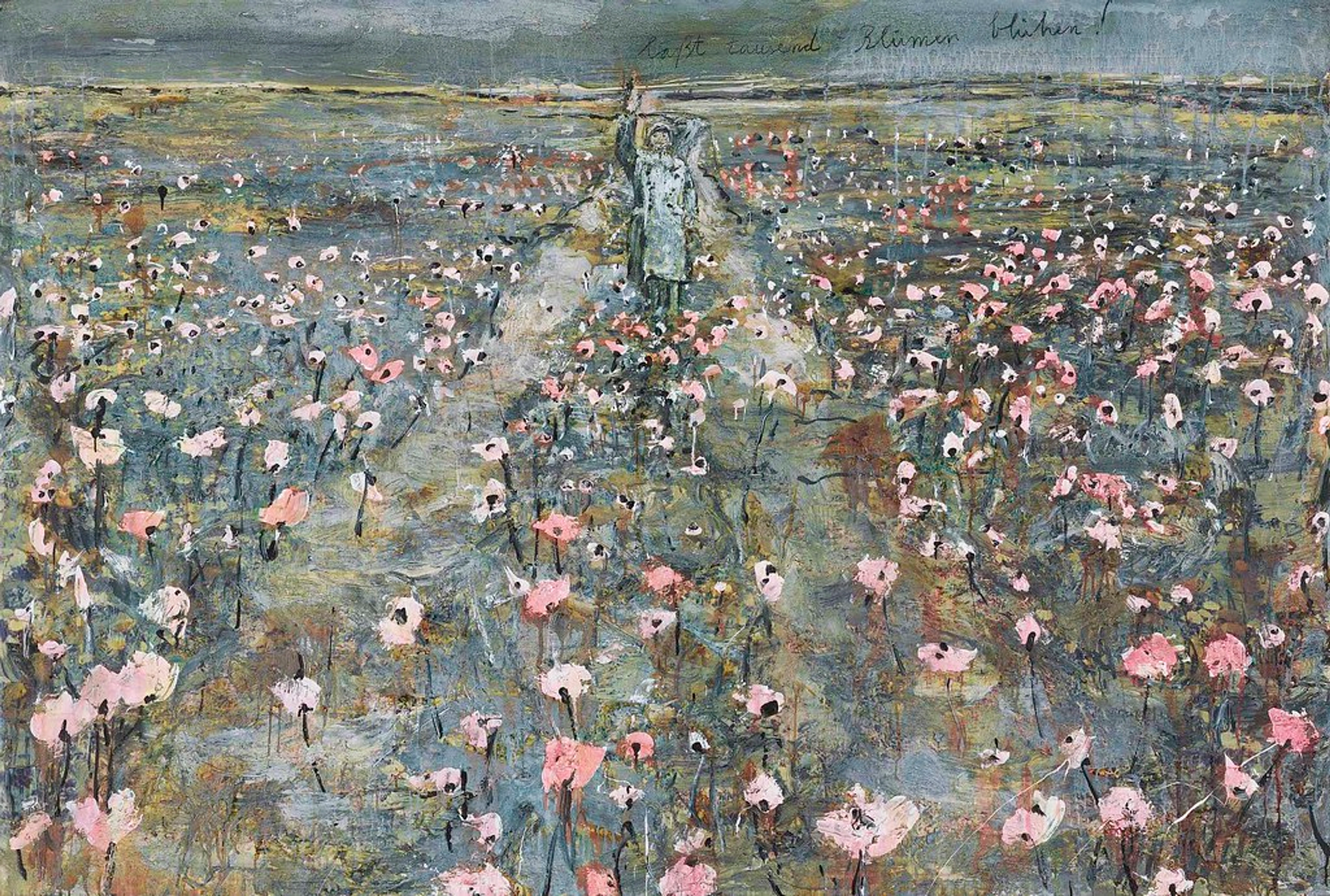
The Hidden Language of Flowers in Art: Symbolism, History & My Abstract Art
Uncover the secret meanings of flowers in art history, from ancient symbols to Dutch Golden Age vanitas and modern abstract works. Explore botanical codes and their enduring influence on art.
The Hidden Language of Flowers in Art: Symbolism, History & My Abstract Art
What if every bloom in a masterpiece held a secret, a whispered message from centuries past? I often find myself staring at paintings, especially those with natural elements, feeling this persistent nudge that there's more to them than meets the eye. It's like the artist intentionally placed a subtle hint, visible only to those who know how to look. And I truly believe nowhere is this more true than with flowers in art history. These aren't just pretty embellishments; they're profound whispers from the past, each petal often carrying specific, sometimes startling, messages about love, loss, virtue, or even political allegiance, connecting us to stories and emotions across time. This journey into deciphering botanical codes is something I find endlessly fascinating, especially as an artist constantly seeking to infuse my abstract works with similar layers of hidden meaning. My goal here? To pull back the curtain on this hidden language, exploring why flowers became such potent symbols across history, what their common meanings reveal, and how their context profoundly shapes their message, influencing my own abstract works even today.
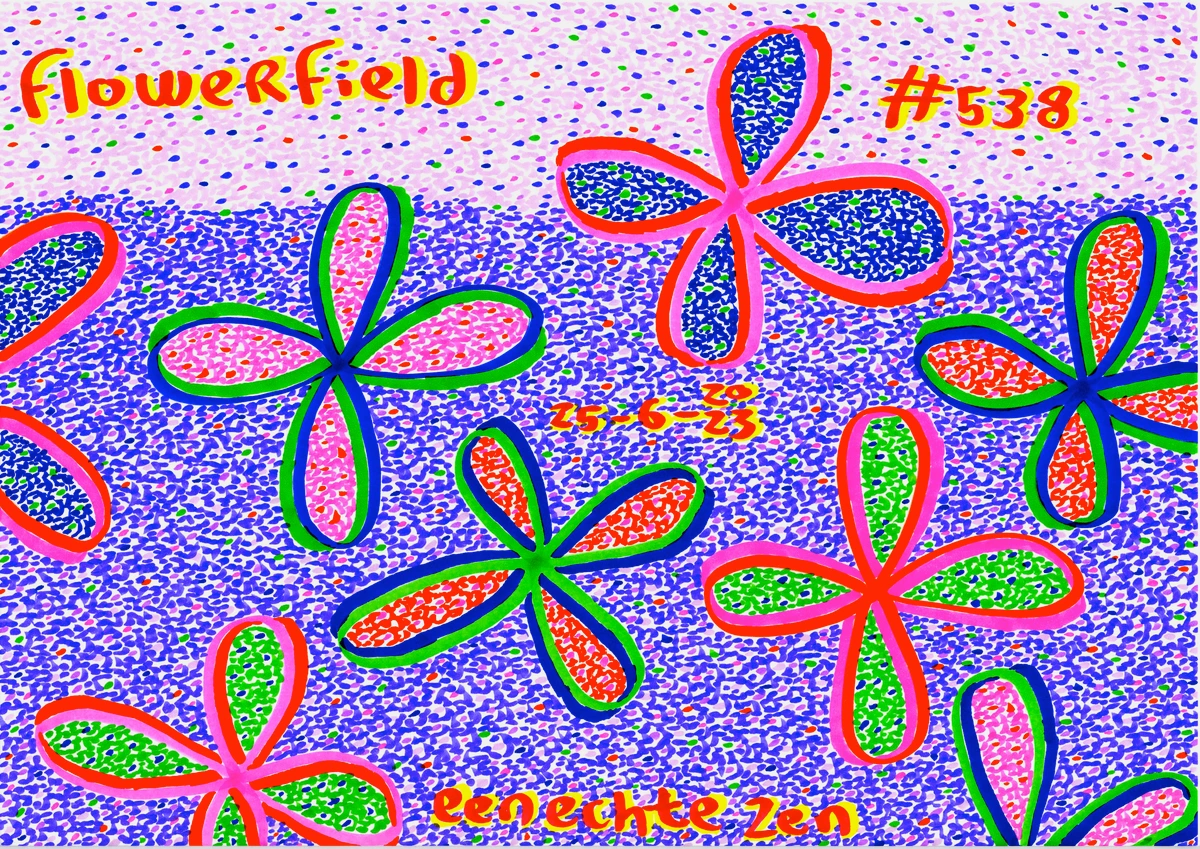
I remember once, walking through a gallery, completely oblivious. A beautiful still life, lots of vibrant blooms. "Lovely," I thought. But then a friend, a real art history buff (we all need one of those, right?), pointed out the wilting rose, the fly on a leaf, the dropped petal in a Dutch Golden Age piece, maybe something by Willem Kalf. Suddenly, the painting wasn't just 'lovely' anymore. It was a meditation on life's fleeting nature, a vanitas – a powerful reminder of mortality and the ephemeral beauty of existence. My perspective shifted entirely. It completely changed how I looked at art. It's like learning a new language, only this one is spoken in petals and pigments, and for me, it unlocked a whole new way of seeing the world. That whole experience, that sense of unlocking a hidden conversation, really got me thinking: why flowers? Why did artists from ancient civilizations right up to the Victorians fill their canvases and their lives with these silent communicators? What made them so potent? This fascination led me down a rabbit hole of art history, into the rich, visual whispers of flowers. It's about symbolism in art in its most profound and often subtle form.
Why Flowers? A Journey Through Botanical Codes
So, why flowers? Why did artists pack their canvases with these silent communicators from ancient Egypt to the Victorian era? Well, partly because they're beautiful, obviously. But mainly, because they were everywhere, understood by many, and could convey complex ideas without needing a single word. Think about it: a rose is universally recognized, but its meaning shifts with its color, its state, or even its companions. Beyond their aesthetic appeal and widespread presence, flowers offered artists practical advantages: they were readily available year-round in various forms (or easily preserved through meticulous botanical studies), their life cycles mirrored human existence (birth, bloom, decay), and they could be arranged to tell intricate stories without overt textual explanation. It was a language accessible to many, even the illiterate, and offered a discreet way to inject profound meaning into a composition.
While floriography, the systematic study of flower meanings, truly blossomed into a social phenomenon in the Victorian era (think of it as their version of a secret emoji system!), the use of flowers as potent symbols wasn't exactly new. In fact, coded floral communication, albeit less formalized, existed long before, perhaps in medieval courtly love poetry or earlier literary traditions. Long before Queen Victoria, ancient civilizations like the Egyptians revered the lotus as a symbol of creation and rebirth, emerging from primordial waters. In Mesopotamia, the tree of life was often adorned with symbolic rosettes, signifying fertility and divine power. And in ancient India, the lotus consistently denoted purity, divine beauty, and spiritual enlightenment in Buddhist and Hindu iconography, often specifically associated with deities like Lakshmi or the Buddha himself. Even simple herbs and cultivated vegetables sometimes carried symbolic weight, referencing medicinal properties, abundance, or folk beliefs.
Even the ancient Greeks and Romans wove flowers into their myths and daily lives; laurel symbolized victory and honor (think Olympic wreaths), narcissus represented vanity, and roses were linked to Venus (Aphrodite) and Bacchus, embodying love, pleasure, and fleeting beauty. You'd find them not just in myths and poetry, but adorning homes, temples, and depicted in frescoes in places like Pompeii and other grand villas, often carrying domestic, religious, celebratory, or even funerary significance, as flowers were sometimes placed on graves or used in rites for the deceased. Historically, religious art, particularly in the Renaissance, often employed flower symbolism to tell stories to a largely illiterate populace. Think of a lily in an Annunciation scene – a visual shorthand for purity that everyone understood. This growing scientific interest led to the proliferation of detailed botanical illustrations, which in turn fueled a broader appreciation and understanding of individual species, making them even more potent and recognizable symbols in art. Later, as art became more secular, driven by this burgeoning scientific interest and the emergence of a mercantile class keen on exotic botanical specimens, flowers continued to serve as subtle cues in portraits, still lifes, and genre scenes, hinting at virtues, vices, wealth, or even political affiliations. For instance, the white rose historically symbolized the Jacobite cause in Britain, while the red rose was emblematic of the House of Lancaster during the Wars of the Roses, demonstrating how deeply floral codes intertwined with political statements. The ephemeral nature of fresh blooms also encouraged artists to create meticulous drawings and studies, ensuring their symbolic essence could be captured enduringly. It’s like a secret handshake between the artist and a discerning viewer. We touched upon the power of color symbolism before, but flowers add another layer of complexity, intertwining form and hue.
Decoding the Bouquet: Common Flowers and Their Historic Meanings
So, with that context in mind, let's dive into some of the all-stars of symbolic floriculture. This isn't an exhaustive list, mind you – there are countless flowers with stories to tell – but these are the ones you'll spot most often, once you know what to look for. And here's a little secret: sometimes the absence of a flower, or the combination of specific blooms in an arrangement, or even a single dropped petal, tells an even deeper, more complex story than a single flower ever could. It’s like reading between the lines, but with petals and leaves. To make things a little easier, I've put together a quick cheat sheet for some of the common players:
Flower | Primary Meaning | Secondary/Contextual Meaning | Visual Clue/Context |
|---|---|---|---|
| Rose | Love, Passion, Beauty | Fleeting nature of life/beauty (wilting), Secrecy | Color (red/passion, white/purity, yellow/friendship), state (bud/secrecy, wilting/mortality) |
| Lily | Purity, Innocence | Annunciation, Royalty (fleur-de-lis) | White variety with Virgin Mary, stylized as fleur-de-lis for royalty |
| Tulip | Wealth, Status (17th C. NL) | Folly, Fleeting material possessions (Tulip Mania) | Exotic varieties, often in Dutch Golden Age still lifes |
| Carnation | Love, Betrothal, Marriage | Divine love, Grief, Remembrance | Color (red/pink for love, white/pure love, dark/grief, often referencing Christ's crucifixion nails/wounds), sometimes alongside Christ figures |
| Iris | Royalty, Wisdom, Faith | Message, Valor | Often blue or purple, frequently linked to the Virgin Mary or divine messengers |
| Rosemary | Remembrance, Loyalty | Fidelity, Friendship | Often depicted as sprigs, sometimes laid over graves |
| Lavender | Purity, Devotion, Serenity | Solitude, Healing | Often depicted in natural, calming settings |
| Sunflower | Adoration, Loyalty, Longevity | Vanity, Self-obsession (Apollo) | Turning towards the sun, sometimes in portraits |
| Poppy | Sleep, Peace, Death | Remembrance, Solace, Fertility (Morpheus) | Often red, associated with battlefields, mythology (Morpheus) or sleep |
| Violet | Modesty, Humility, Faithfulness | Death, Mourning | Small, unassuming, often nestled in foliage or near graves |
The Ever-Present Rose: Love, Passion, and... Mortality?
The rose is probably the queen of all symbolic flowers. Most of us think "love" or "romance" immediately, right? And you'd be largely correct. Red roses scream passion, white roses whisper purity, and pink ones suggest grace and admiration. But its meaning isn't static; a yellow rose, for example, might suggest friendship, or sometimes jealousy, depending on the context, and a black rose often symbolizes death or farewell. And don't forget the thorns – often symbolizing pain, suffering, or even referencing the Fall of Man. In historical art, especially those Dutch Golden Age still lifes, a wilting rose, or one with thorns, often symbolized the fleeting nature of life, beauty, and pleasure – a classic vanitas motif, a beautiful, yet stark, reminder that life is short and pleasure is temporary. It's a bit of a downer, perhaps, but a powerful message. Sometimes, even an unopened rosebud could signify secrecy or unspoken love, a meaning I find rather poignant. In medieval illuminated manuscripts and classical art, roses often adorned the "Garden of Love" scenes, reinforcing their connection to romance and earthly delights. What stories do you think a wilting rose tells?
Lilies: Purity, Annunciation, and Royal Power
Ah, the lily. Pristine, elegant. In Christian art, especially, the white lily is almost synonymous with the Virgin Mary, symbolizing purity, innocence, and virginity. You'll often see an Archangel Gabriel presenting one to her in Annunciation scenes, signifying the immaculate conception. Beyond white, the lily's color can add layers: yellow lilies might convey joy or even, in some contexts, infidelity, while orange lilies can represent passion. But the lily's reach goes further; the fleur-de-lis, a stylized lily (or iris, depending on interpretation), became a powerful symbol of French royalty and power, representing divine right and majesty. It could also appear in images of other saints to denote their purity or faith. While primarily associated with Christian iconography in Western art, the elegance and pure form of the lily has also made it a symbol of nobility and elevated status in various cultural contexts. From sacred to sovereign, it covers a lot of ground, showing how deeply ingrained these floral codes became. Isn't it fascinating how a single flower can hold such dual significance?
Tulips: Wealth, Folly, and Dutch Mania
Moving from the subtle affections of the carnation, let's turn our attention to the surprisingly volatile tulip. You might think, "Oh, just a pretty spring flower." But oh, how wrong you'd be in the context of 17th-century Dutch art! Tulips, particularly exotic varieties like the coveted "broken" tulips with their flame-like patterns – ironically caused by a tulip breaking virus – were incredibly expensive and became a symbol of immense wealth and status during Tulip Mania – a bizarre economic bubble, a real-life episode of collective floral madness that gripped the Netherlands! In still lifes of the era, a single, perfectly rendered tulip could represent immense riches, but also the folly and fleeting nature of material possessions, hinting at the bubble's inevitable burst. A red tulip might convey passionate love, while a yellow tulip could suggest despair or lost love, adding a layer of emotional complexity to their economic symbolism. This reflects the Protestant work ethic and a subtle warning against excessive materialism that permeated Dutch society. Beyond their speculative value, artists were captivated by the tulip's vibrant colors and elegant forms, often depicting them with meticulous botanical accuracy, appreciating their sheer aesthetic beauty alongside their symbolic weight. It’s a fascinating crossover where economic history meets botanical symbolism, a real-world story that played out on canvas. It just goes to show you, sometimes the most beautiful things can hide the most complex, or even cautionary, tales.
Carnations: Betrothal, Divine Love, and Grief
The carnation is another subtle one, often overlooked for its rich history. In Renaissance portraits, particularly those from Italy, a red or pink carnation often signified love, betrothal, or marriage, sometimes exchanged between lovers as a token of engagement or marital fidelity. But like many flowers, its meaning isn't monolithic. White carnations could denote pure love or remembrance, and in some contexts, particularly in religious art, darker hues could even be associated with divine love or grief, often subtly referencing the nails of Christ's crucifixion, or the wounds themselves, especially in depictions of the Madonna and Child or Passion scenes – a somber thought for such a cheerful-looking flower. A yellow carnation, however, can symbolize disdain or rejection. It’s a reminder that even the brightest blooms can carry profound, sometimes dark, undercurrents. What hidden message might a carnation be sending you?
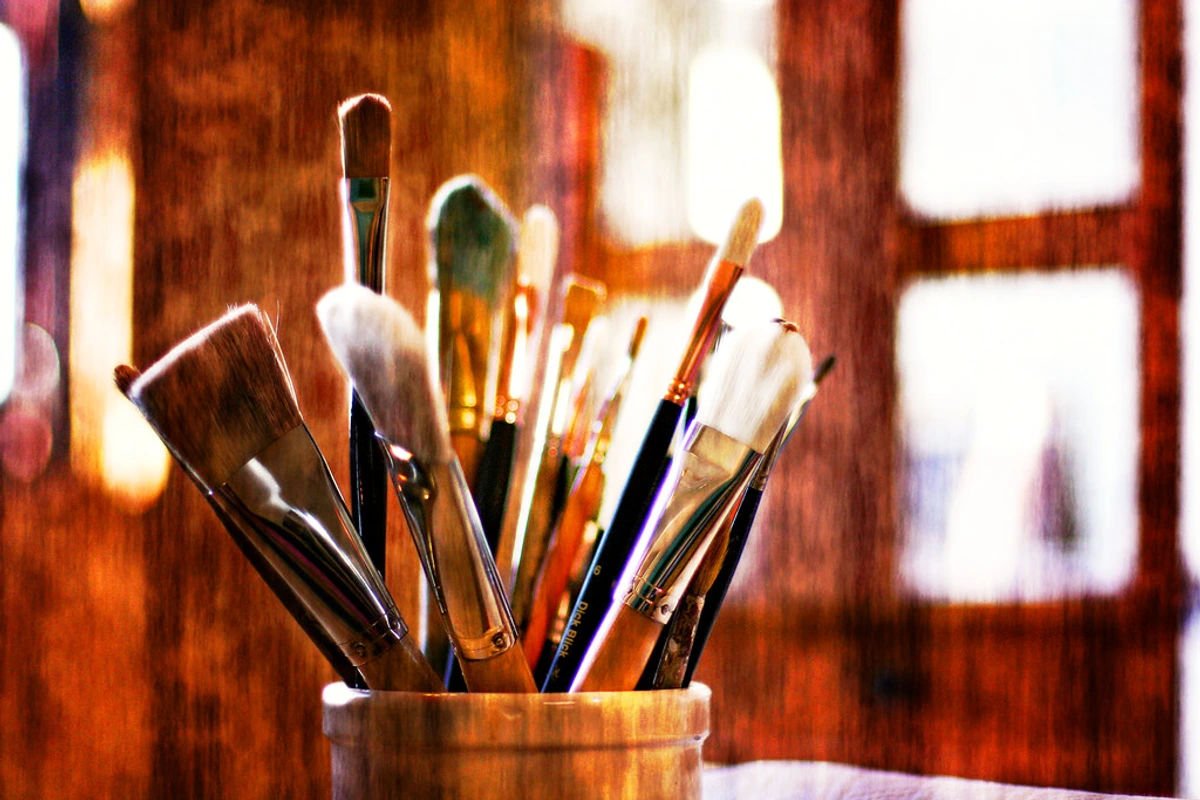
Iris: Royalty, Wisdom, and Divine Messages
Often overlooked despite its regal appearance, the iris carries significant symbolic weight. Its name comes from the Greek word for rainbow, a nod to its wide array of colors. Historically, the blue or purple iris often symbolized royalty and majesty, a meaning reinforced by its close association with the fleur-de-lis, which some art historians argue is actually a stylized iris rather than a lily. In religious art, particularly linked to the Virgin Mary, the iris could denote faith, wisdom, and valor, or even serve as a messenger of sorrow, its sharp, sword-like leaves sometimes referencing her sorrows. Its appearance often conveyed a sense of dignity and importance.
Rosemary: Remembrance, Loyalty, and Fidelity
The humble sprig of rosemary might seem unassuming, but its meaning is deeply rooted in history and tradition. Universally associated with remembrance, it was often used in funerals and memorials, a poignant symbol of fidelity and loyalty to those who have passed. Shakespeare famously highlighted this in Hamlet ("There's rosemary, that's for remembrance"). In portraits and genre scenes, a sprig of rosemary could subtly signify unwavering friendship, marital fidelity, or a promise never to forget. Its strong, enduring scent has long been believed to stimulate memory, reinforcing its symbolic power.
Lavender: Purity, Devotion, and Serenity
With its gentle scent and soft purple hue, lavender embodies purity, devotion, and serenity. Often depicted in natural, calming settings or associated with contemplative figures, it could also symbolize solitude and healing. In some contexts, it hinted at spiritual devotion or a quiet, unassuming virtue. Its use in aromatherapy and traditional medicine further connects it to ideas of peace and well-being, translating into a visual shorthand for tranquility and grace in art.
Sunflowers: Adoration, Loyalty, and a Touch of Vanity
Moving from the quiet messages of lavender, we turn our gaze to the bold sunflower. This is one I find particularly intriguing, mostly because of its overt physical characteristic: it literally turns to follow the sun. This natural behavior made it a powerful symbol of adoration, loyalty, and devotion. Think of it as steadfast love or unwavering faith. Its connection to the sun also linked it to figures like Apollo in classical mythology, further solidifying its association with light, divinity, and sometimes even a king or queen's unwavering gaze towards their people. The sun itself, often a symbol of life, power, and divine presence, lends its formidable meaning to the sunflower, amplifying its message of unwavering reverence. But like any good symbol, it has its nuances; in some contexts, its relentless pursuit of the sun could also hint at vanity or self-obsessiveness. It really depends on who's painting it, and what they're trying to whisper to you. Is it unwavering devotion or a warning against self-absorption?
Poppies: Sleep, Remembrance, and Profound Peace
Then there's the poppy. Perhaps best known in modern memory for its association with remembrance, particularly after World War I, its symbolism runs much deeper. Historically, due to its properties (think opium), it often represented sleep, peace, and death. In ancient myths, it was linked to goddesses of fertility and agriculture (like Demeter), and famously to Morpheus, the Greek god of dreams, which is why it often appears near slumbering figures or in funerary art. Its abundance of seeds also made it a symbol of fertility and agricultural plenty in various ancient cultures. A field of poppies can be breathtakingly beautiful, but in art, it often carries a poignant, almost mournful, resonance. What emotions does a poppy evoke for you?
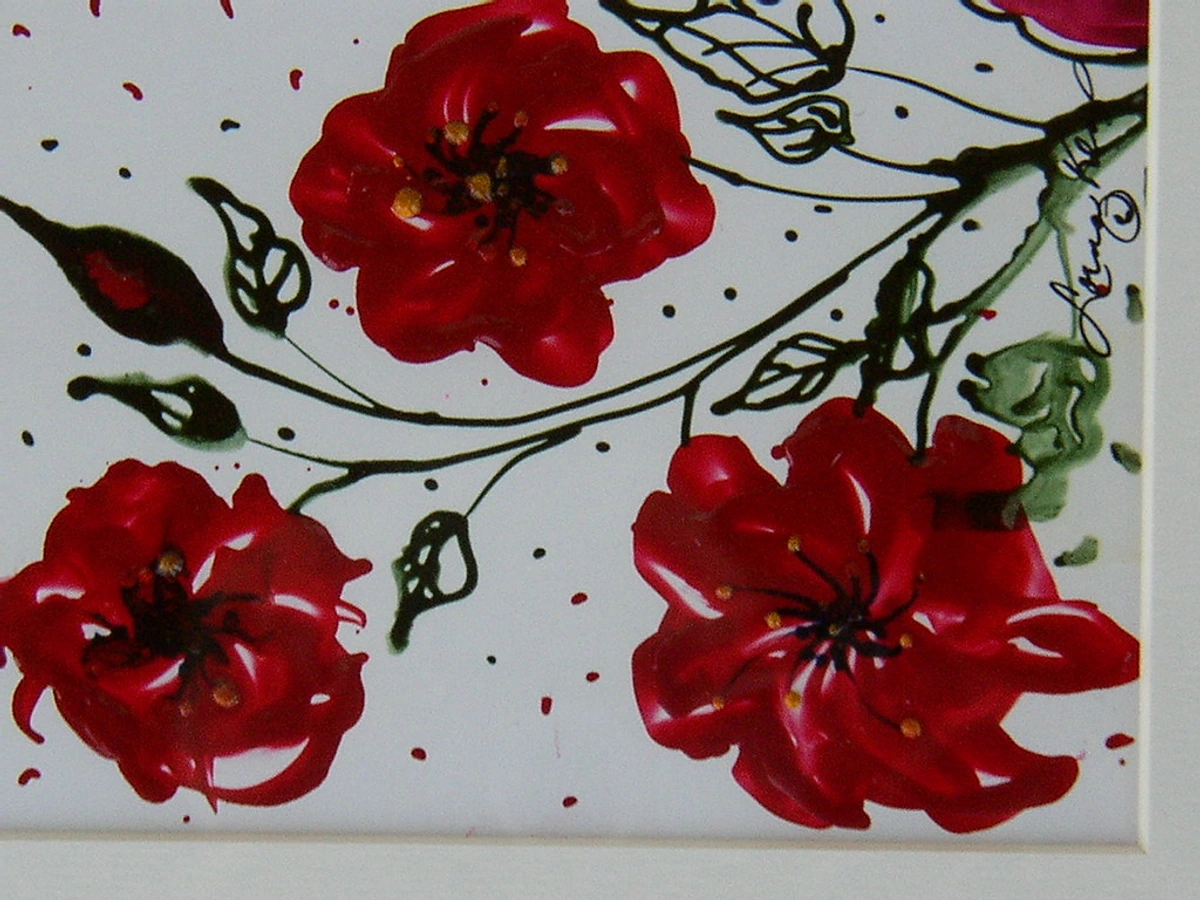
Violets: Modesty, Humility, and Quiet Reflection
And finally, the humble violet. This small, often unassuming flower carries significant weight, primarily symbolizing modesty, humility, and faithfulness. Its hidden growth, often nestled amongst leaves, contributes to its association with spiritual humility and virtue. In some traditions, particularly in Victorian mourning art and jewelry, it also represents death and mourning, especially when found in gravesites. This association extends back to classical antiquity, where violets were sometimes placed on graves as a token of remembrance. It's a flower of quiet, introspective meaning. It's a testament to how even the smallest bloom can hold the deepest secrets. Does its quiet presence speak louder than a grand display?
Seeing Beyond the Petals: Context is King
But here’s the thing about symbolism in art – it's rarely a one-to-one dictionary lookup. The meaning isn't always just in the flower itself; the context, the composition, the accompanying elements, and even the artist's personal narrative, play crucial roles in deepening or even subverting the message. A single, perfect bloom has a different message than a sprawling, untamed garden. A vase overflowing with life is distinct from one with fallen leaves or a lurking insect. To truly "read" a painting, you've got to consider the whole story. It's enough to make your head spin, perhaps, wondering if it's all just too much to decipher! But for me, that challenge is precisely where the fun lies.
Take, for instance, the incredible detail in a Dutch Golden Age still life by someone like Rachel Ruysch or Jan Davidsz. de Heem. Ruysch, for example, was known for her meticulous depiction of insects (like snails, often symbolizing sin or slowness; caterpillars, representing transformation or resurrection; or butterflies, symbolizing the soul) and decay (like wilting leaves or a rotting apple, hinting at the Fall or corruption) alongside vibrant blooms. This wasn't just botanical accuracy; the presence of such elements, like a wilting rose next to a vibrant tulip, powerfully reinforced themes of transience and the memento mori – a stark reminder of life's brevity. These insects and signs of decay were often specifically chosen to highlight the fleeting nature of beauty and the inevitability of death, serving as a moralistic warning. For a deeper dive into insect meanings, you might explore animal symbolism in art. De Heem's opulent arrangements, on the other hand, often balanced the beauty of abundance with similar subtle hints of mortality through elements like insects or partially eaten fruit, creating a conversation between life's richness and its inevitable end. Their paintings often feature opulent arrangements of diverse blooms, but a wilting flower, a creeping insect, or a fallen petal would immediately transform the scene from mere beauty to a profound reminder of life's transience and the inevitability of death. Every element was chosen with deliberate symbolic intent, a true masterclass in visual storytelling. And it always makes me think about how even my abstract works try to capture that balance between fleeting beauty and enduring presence.
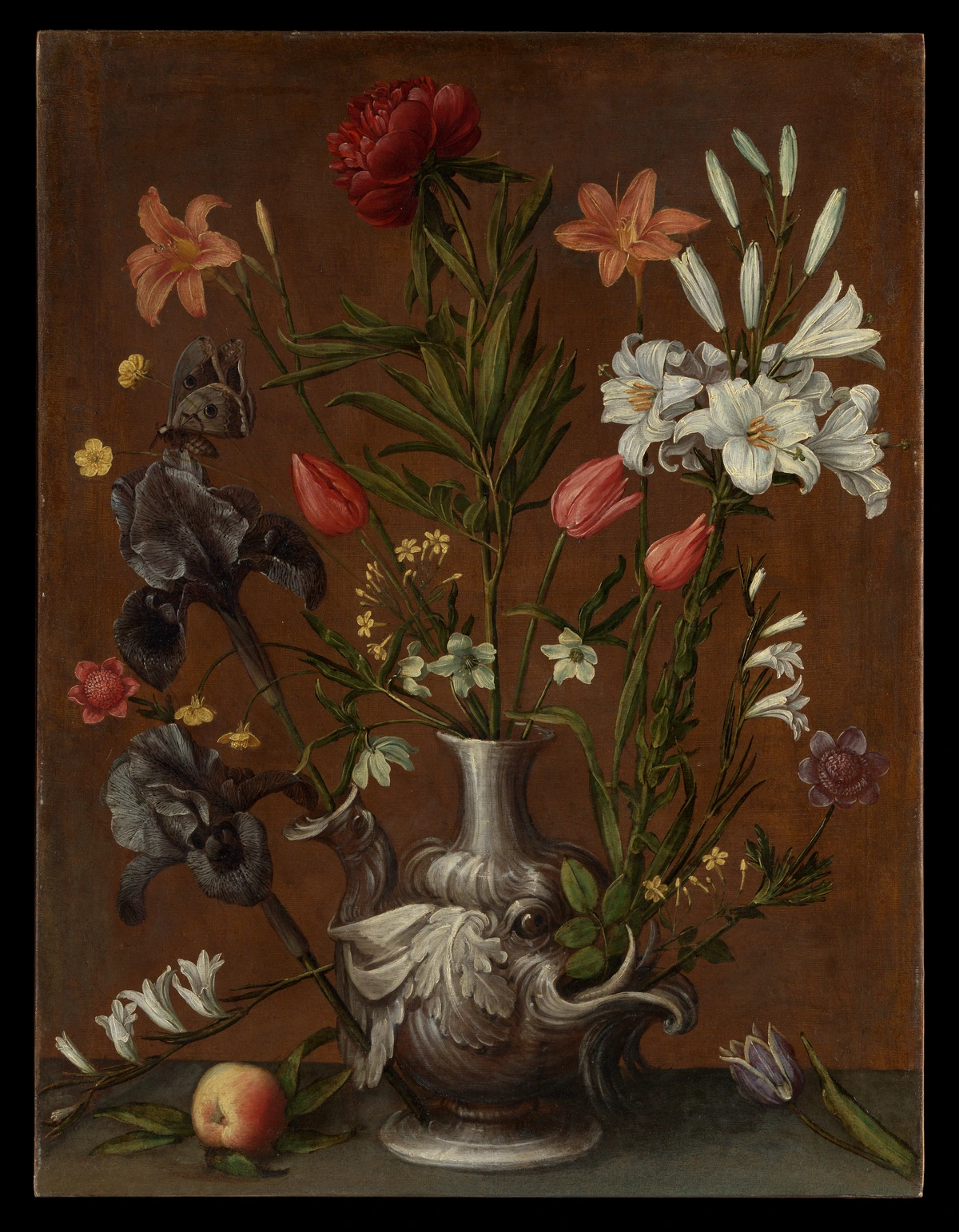
Consider this image by Van Gogh, for instance, a beautiful illustration of how context shapes meaning.
![]()
Here, the almond blossoms are not just beautiful; they burst with life and optimism. Painted for his nephew, Vincent Willem, as a gift for his birth, they symbolize new life, hope, and renewal. This hopeful departure from some of his more turbulent works is a direct message of joy and a testament to the artist's deepest affections. It was clearly influenced by the crisp outlines and flattened perspective of Japanese Ukiyo-e prints (Japanese woodblock prints), which Van Gogh deeply admired. The Ukiyo-e influence encouraged him to abstract slightly, capturing the essence of the blossoming branches rather than a literal botanical study. Crucially, it also informed his compositional choices, leading to the cropped branches and a focus on the flat, decorative surface, which amplifies the sense of vitality and renewal, moving towards a more symbolic representation, focusing on the feeling of new life rather than mere botanical accuracy. This is the kind of transformative abstraction that continues to inspire my own artistic journey.
Or take a look at Rousseau's "The Dream":
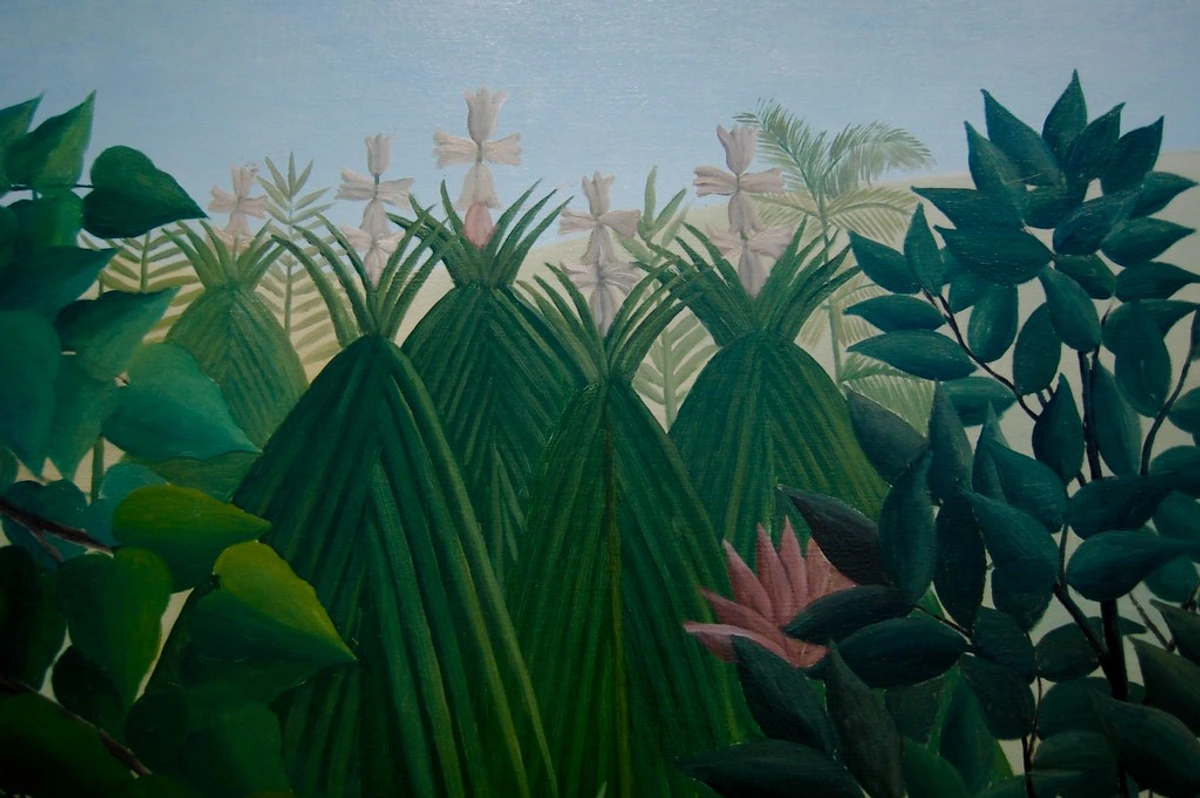
While not focusing on a single flower's literal meaning, the lush, almost fantastical flora here contributes powerfully to the dreamlike, exotic, and slightly unsettling atmosphere. The sheer abundance and imagined wildness of vivid, jungle-like plants hints at a primal, untamed world, a landscape of the subconscious where beauty intertwines with potential hidden dangers. These overgrown, towering blooms and dense foliage collectively evoke a sense of mystery and the unknown, making you wonder what secrets lie hidden within the verdant depths, reflecting Rousseau's unique, self-taught vision of the exotic, a hallmark of Outsider Art. It's a wonderful example of how the overall botanical presence can create an entire world of meaning.
A wonderful example of how artists integrated elaborate floral narratives can be found in the Pre-Raphaelite Brotherhood. Artists like John Everett Millais or Dante Gabriel Rossetti used flower symbolism not just as embellishment, but as central to their narratives. Millais's Ophelia, for instance, is famously replete with flowers, each chosen for its specific symbolic meaning related to death, innocence, and betrayal, forming a visual elegy. The floating pansies, for instance, signify 'thoughts,' nettles represent 'pain,' daisies 'innocence,' water crowfoot 'ingratitude,' and the willow she hangs from denotes 'forsaken love' and 'melancholy' – each flower a poignant thread in Ophelia's tragic story, specifically chosen to echo her madness, grief, and eventual demise. It's a masterclass in how a carefully chosen botanical element can deepen a story, sometimes without a single word, leaving me to ponder how I might translate such intricate storytelling into an abstract landscape. You can explore more about their fascinating world in our guide to Pre-Raphaelite Brotherhood symbolism.
From History to Today: The Enduring Power of Flora
Even as art moves towards abstraction, or specific abstract art styles like my own work, the emotional resonance of flowers remains. We might not always depict a perfect rose with a literal meaning, but the feeling of growth, decay, beauty, or fragility still inspires. For me, understanding these historical layers enriches my appreciation for all art, connecting us to artists across centuries. It's a reminder that beauty isn't just surface-deep; it's often a vessel for profound thought and emotion. If you're curious about the broader evolution of non-representational art, our article on abstract art movements offers a great overview.
My own journey as an artist often sees me translating these deep, emotive responses to nature into vibrant, abstract pieces. While I might not paint a literal wilting tulip, the concept of transience and the beauty of fleeting moments undeniably informs my approach to color and form. For instance, the historical weight of a wilting rose might manifest in my choice of somber yet vibrant blues or grays, perhaps textured to suggest decay, while the joyous burst of an almond blossom might inspire a palette of soft pinks and optimistic whites in sweeping, upward strokes, as I explored in my 'Ephemeral Blooms' series. In my 'Whispers of the Wild' collection, I’ve directly translated the symbolic fortitude of the Chinese plum blossom, not by depicting it literally, but by using stark, resilient brushstrokes of deep indigo breaking through a textured, snow-like white ground, evoking its courage in the face of winter – a fortitude born from its ability to bloom fiercely despite the chill. It's like taking the historical whisper of a flower and transforming it into a modern, resonant echo, a vibrant continuation of centuries of meaning. If you're curious about my journey and how I try to translate some of these deep feelings into my own colorful, abstract pieces, you might want to check out my artist timeline. And hey, if something resonates, you can always explore my art for sale.
Beyond Western traditions, flowers also hold deep symbolic weight in non-Western art. Think of the meticulous botanical studies and elegant plum blossoms in Chinese ink painting, symbolizing resilience and purity because they brave the winter chill to bloom early, enduring harsh conditions. Or the delicate cherry blossoms in Japanese art, representing the transient nature of life (mono no aware), their fleeting beauty serving as a poignant reminder of mortality. In Japanese Ikebana (the art of flower arrangement), each flower and branch carries profound philosophical meaning about nature and humanity; for example, the tallest branch might represent heaven, the middle branch mankind, and the lowest branch earth, with their precise placement and angle conveying harmony and balance. These traditions highlight the universal appeal of flowers as a visual language, even with diverse interpretations. Even in Islamic art, where figural representation is often avoided, floral and vegetal motifs are central, not just for their beauty but for their symbolic associations with paradise, divine creation, and the cyclical nature of life. Intricate patterns, like arabesques and tessellations featuring stylized tulips and roses in Ottoman ceramics or Persian miniatures, embody a deep spiritual meaning through their endless, repeating forms, hinting at the infinite nature of God's creation and the underlying order of the universe, and appearing prominently in architecture, textiles, and calligraphy. Moreover, the texture and medium an artist chooses to depict a flower can significantly impact its perceived symbolism. A delicate watercolor poppy might emphasize its fragility and fleeting peace, while a heavy impasto oil poppy, or even a textured encaustic rendition, could highlight its grounded connection to remembrance and the earth, adding another layer of interpretive richness.
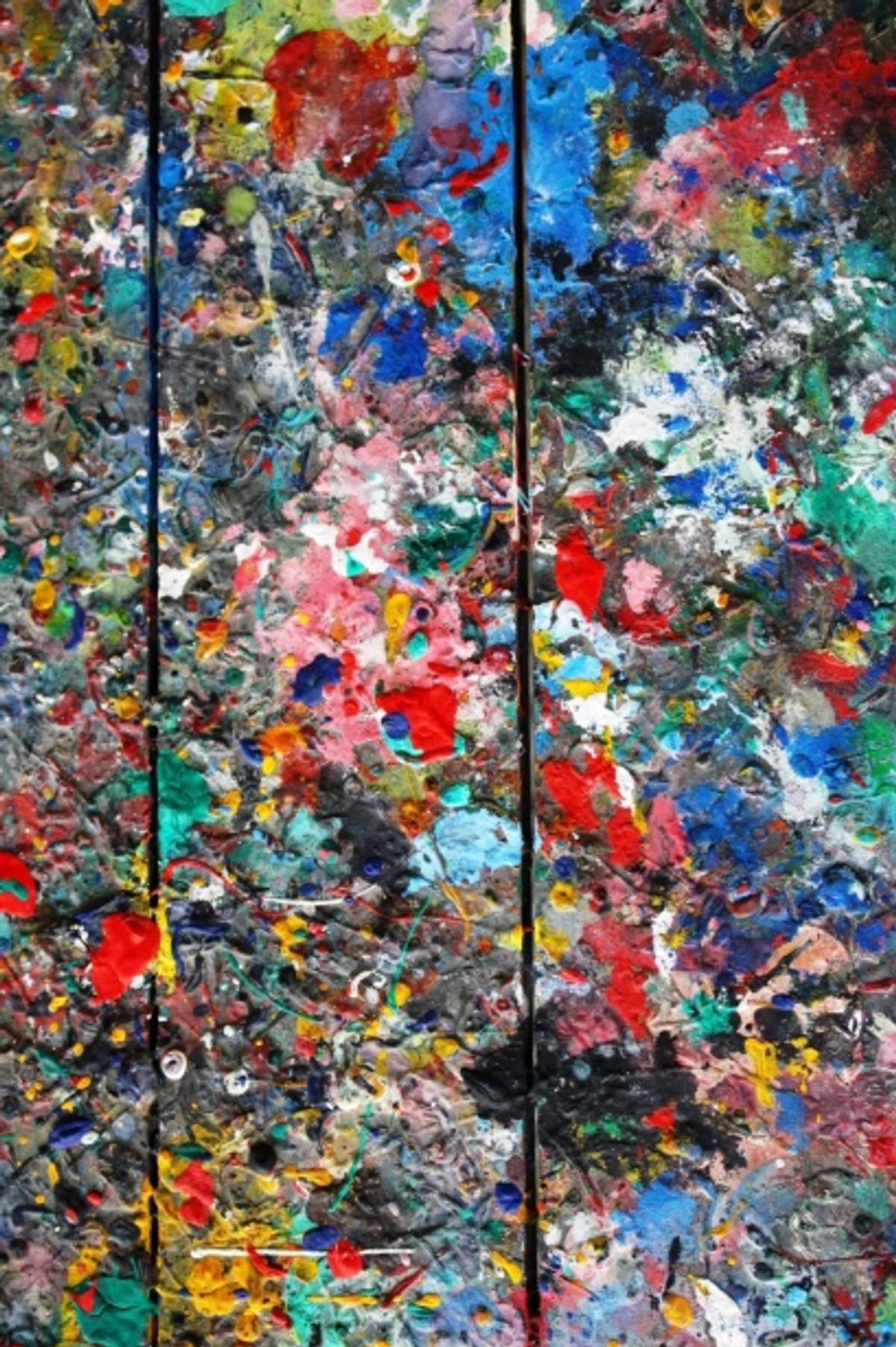
Contemporary artists continue to find inspiration in flora, sometimes subverting traditional meanings or focusing purely on their aesthetic qualities or environmental statements. Anselm Kiefer's powerful, often monumental works, for example, might use vast, textured fields of dried or painted flowers to evoke themes of destruction and renewal, often contrasting their delicate, decaying forms with stark, bleak landscapes or historical references. His use of dried, organic materials, like actual sunflowers, speaks to the fragility of life and the relentless march of time, transforming simple beauty into a poignant statement on human history, nature's cycles, and the aftermath of conflict, creating a powerful commentary on loss and the possibility of rebirth.
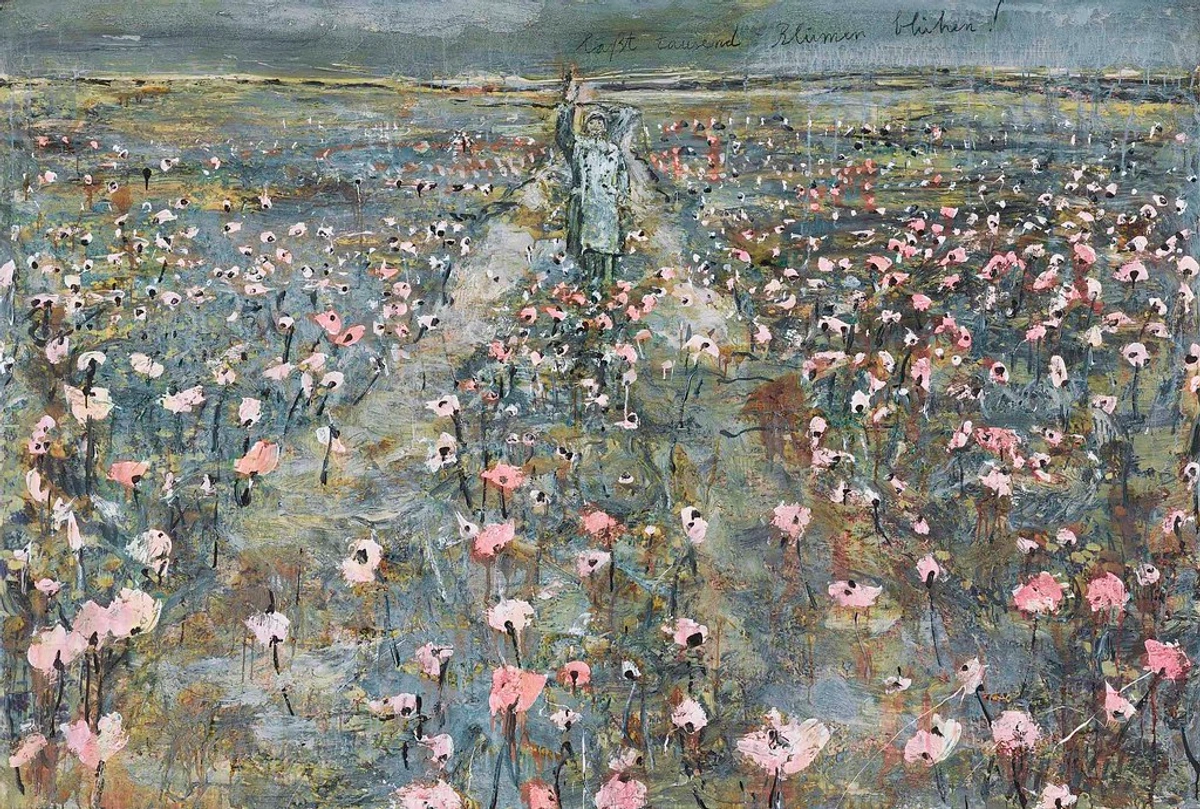
Even abstract collages, like Henri Matisse's "La Gerbe" (The Sheaf), distill the essence of natural forms into vibrant, energetic compositions. Here, Matisse captures the spirit of a bouquet rather than its literal appearance, using simplified, cutout shapes and a bold interplay of colors to convey the vibrancy and arrangement of a floral sheaf. It's a beautiful example of how the floral motif endures, even when stripped down to its most fundamental shapes and colors, proving that sometimes, less truly is more when communicating the profound. So, next time you see flowers in art, remember to look beyond just the petals; there's a good chance they're telling you a story.
Frequently Asked Questions About Flower Symbolism in Art
Got more questions about those silent, blooming storytellers? Here are some of the most common ones I hear:
Q: Are flower meanings universal across all cultures and periods?
A: Not entirely, and honestly, this is a crucial point! While some meanings are quite widespread (like the red rose, almost universally tied to love), others are specific to certain cultures, religions, or historical periods. For example, the lotus flower holds deep spiritual significance in Eastern cultures (purity, enlightenment) but isn't as prevalent with similar meanings in Western art history. Conversely, the lily's strong association with the Virgin Mary is distinctly Western. I always tell people to consider the cultural and historical context of the artwork to avoid misinterpretations – it's like learning the local dialect of art.
Q: How can I tell if a flower in a painting is purely decorative or symbolic?
A: Ah, the million-dollar question! Honestly, it's often the trickiest part, like being a detective with a very subtle case. I usually start by looking for clues. It's like being a detective:
- Prominence: Is the flower unusually prominent or centrally placed, drawing the eye, as if the artist is saying "Look here!"?
- Uniqueness: Is it singular, or part of a carefully constructed, perhaps unusual, arrangement?
- Companions: Are there other symbolic elements in the painting that reinforce a particular message (e.g., a skull for mortality, fruit for abundance, an insect)?
- Anachronisms/Vibrancy: Do certain flowers appear anachronistic for the setting, or are they depicted with unusually vibrant colors that draw your eye, suggesting deliberate choice?
- Context: The overall context of the work itself (religious, portrait, still life, funerary art) often gives a strong hint.
- Artist's Reputation/Style: Is the artist known for embedding symbolic meanings in their work, or for a more straightforward, descriptive style? If an artist has gone to the trouble of depicting a specific bloom, especially if it feels "significant," it very likely carries symbolic weight. And crucially, researching the artist's known intentions or any writings they may have left can be invaluable. Trust your intuition, but always back it up with a little research from art historical resources or scholarly articles if you can!
Q: Did artists always consciously choose flowers for their symbolic meanings?
A: In many periods, yes, absolutely! Especially during the Renaissance, the Dutch Golden Age, and the Victorian era (where floriography – the intricate language of flowers – was incredibly popular), artists and their patrons were well-versed in these meanings. They used them deliberately to add layers of narrative, moral instruction, or personal message to their works. It was a sophisticated visual code. Beyond conscious intent, there was also a strong element of "learned convention" or "visual shorthand." Artists might have incorporated certain flowers simply because they were traditionally associated with specific themes, and viewers expected to see them there, creating a shared visual language. The demands of patrons, who often commissioned works with specific symbolic programs, also played a significant role. Of course, sometimes a flower was simply available or aesthetically pleasing, but its prominence or context often elevates it to symbolic status. It's also worth remembering that the viewer's interpretation, even if diverging from the artist's original intent, contributes significantly to the evolving life and meaning of the artwork itself – a conversation that spans time and perspective. My personal take? The best art invites both.
Q: How can I research specific flower meanings for a particular artwork or artist?
A: This is a fantastic question! Start by identifying the period, culture, and location of the artwork. Then, consult art history textbooks, specialized dictionaries of symbols in art, or museum websites. Many online art databases also provide detailed analyses of individual works. Sometimes, knowing the patron or the artist's personal interests can also provide valuable clues. It’s a bit like detective work, but incredibly rewarding. Always try to cross-reference multiple sources if you can, to get a fuller picture.
Q: How do artists use flower symbolism in modern or abstract art?
A: In modern and abstract art, flower symbolism often becomes less literal and more conceptual or emotional. Artists might use the form, color, texture, or essence of a flower to evoke feelings of growth, decay, beauty, or fragility without depicting the flower realistically. For example, an abstract painter might use sweeping lines and a vibrant red palette to evoke the passion of a rose, without painting an actual rose; in my own work, I often use fractured forms and contrasting hues to capture the tension between a flower's inherent beauty and its transient nature, or infuse a piece with the hopeful upward movement of a blooming almond branch. Sometimes, a flower's traditional meaning might be subverted or reinterpreted to make a contemporary statement, perhaps even making statements about environmental concerns or the fragility of the natural world. Think of an artist using dead flowers to comment on ecological damage, completely shifting the historical meaning of beauty. For artists like myself, understanding the historical weight of these symbols allows us to break them apart and rebuild them in new visual languages, conveying universal themes in fresh, often more personal, ways. It's less about a dictionary definition and more about emotional resonance and subjective interpretation – a beautiful echo of past meanings in a contemporary voice.
Q: Where can I learn more about other types of symbolism in art?
A: I'm glad you asked! We have a whole section dedicated to symbolism in art, and also articles on animal symbolism and color symbolism. There's a whole world of hidden meanings waiting for you!
Key Takeaways: How to "Read" Floral Symbolism in Art
Deciphering the secret language of flowers in art can feel like a grand mystery, but it's incredibly rewarding. Think of yourself as a botanical detective! Here are a few key points to remember when you're faced with a painting brimming with botanical life:
- Context is Paramount: Never assume a universal meaning. A flower's message shifts dramatically with the culture, historical period, the artist's personal intent, and its companions in the artwork. It's a dialogue, not a monologue.
- Look Beyond the Bloom: Consider not just the flower itself, but its state (budding, full bloom, wilting), its color, and any insects, leaves, fruits, or other elements surrounding it. These details often reinforce or alter the primary message.
- The Power of Combination: Individual flowers have meanings, but a bouquet or arrangement often tells a much richer, layered story through the interplay of its components. Think of it as a botanical sentence, or even a poem. The specific type of arrangement (e.g., a formal vase versus a wild scatter, a single stem versus a lavish bunch) can also add to the narrative.
- The Meaning of Absence: Sometimes, what isn't depicted can be as powerful as what is. The deliberate exclusion of a certain flower, or an empty vase, can symbolize loss, neglect, or the ephemeral nature of life itself.
- Investigate the Artist's Background & Patronage: What was the artist's background? What were their common themes? And who commissioned the work? Knowing something about the creator, their life, and their patrons can offer invaluable insight into their symbolic choices and the intended audience.
- Embrace the Ambiguity: Sometimes, there isn't one definitive meaning, and that's okay. Art often invites multiple interpretations, and sometimes the mystery is the message itself. The beauty is in the conversation it sparks within you.
- Consider the Medium: Remember that the material and technique an artist chooses to depict a flower can significantly add to its symbolic weight, emphasizing fragility, permanence, or texture in powerful ways.
A Final Thought and an Invitation
It's truly amazing, isn't it? How something as seemingly simple as a flower can carry such profound weight, connecting us to the thoughts and feelings of artists who lived centuries ago. Every time I stumble upon a new interpretation, a forgotten meaning, it feels like I'm unlocking a little piece of history, a shared human experience that transcends time. For me, these layers of meaning are what make art so endlessly captivating. As an artist working with abstract forms, understanding these historical narratives doesn't restrict me; it frees me, allowing me to distill these universal themes of beauty, transience, and emotion into new, vibrant expressions. My recent 'Garden of Echoes' series, for instance, directly translates the quiet solemnity of a historical violet into a cascade of deep purples and muted grays, creating a contemporary meditation on humility and remembrance. It's never just a pretty picture; it's always a conversation, a mystery, a whispered secret waiting to be understood and reinterpreted. And that, for me, is the magic of art. So, next time you're gazing at a bloom, whether on canvas or in a vase, I hope you pause for a moment longer and let its secret story unfold – just like those whispers from centuries past that first caught my attention. If you’ve discovered a hidden meaning or an interesting floral symbol in a piece of art, I’d love to hear about it in the comments below! If you're ever in 's-Hertogenbosch, I'd love for you to experience this magic firsthand; come visit my museum, the Zen Museum in Den Bosch, and perhaps we can share more interpretations of these beautiful whispers!




